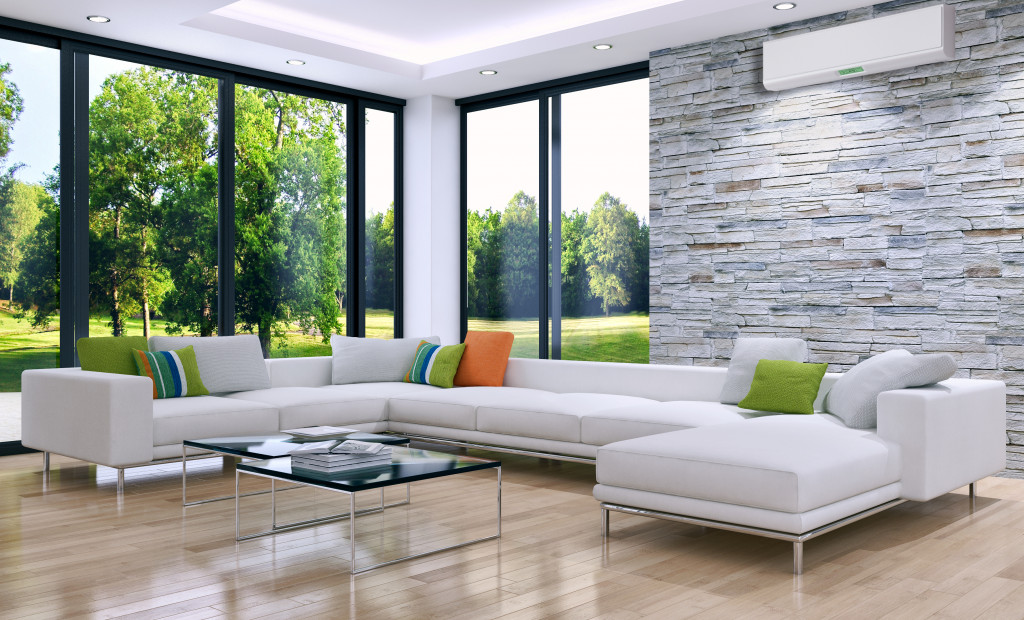- Use window treatments such as curtains, blinds, or shades to block out direct sunlight and reduce glare.
- Install awnings on south and west-facing windows to reduce incoming sunlight during summer months.
- Plant deciduous trees outside windows to provide shade in summer and let through light in winter.
- Choose lighter furniture and carpet colors so they don’t absorb too much heat from direct sunlight.
Having the right amount of natural light in your home can make a big difference in how comfortable and inviting it feels. Too much sunlight can cause glare, heat up rooms quickly, and fade furniture and carpets. Too little light can leave you feeling gloomy and depressed.
Fortunately, there are many ways to control the amount of natural light in your home to have the right balance for each room. This article will discuss some simple tips for ensuring that your home has optimal natural lighting.
Improve your windows
Here are some ways how you can improve your windows to control natural light in your home:
Use window treatments

Controlling the amount of natural light in your home is essential for many reasons and can be easily accomplished with window treatments such as curtains, blinds, or shades. By ensuring the sun’s direct rays are blocked out, you’ll be able to maintain a more regulated temperature in your home, reduce glare and help protect against fading of furniture and interior decorations.
Interior solar shades have also emerged as a great way to control sunlight while protecting against UV damage. Furthermore, investing in good quality window treatments can reduce exterior noise pollution, giving you peace and privacy in the comfort of your home.
Install awnings
Installing awnings over the windows on your home’s south and west sides effectively reduces the amount of sunlight coming into the house during the summer months. This helps to lower temperatures inside due to solar radiation, creating a more comfortable environment for you and your family.
Not only that, but controlling the amount of natural light entering your home limits fading on any furniture, carpet, or other fabrics exposed to direct sunlight. Additionally, shades and awnings can prevent potential wood rot from prolonged exposure to humidity from high temperatures outside.
Install reflective films
Installing reflective films on windows is an inexpensive and effective way to reduce excessive natural light entering your home. It will help regulate energy costs, reduce glare, and maintain a comfortable living environment.
It creates a more pleasant atmosphere inside the home and helps protect furniture and other items from fading or sun damage due to overexposure. Additionally, the reflective film will lower the indoor temperature by reflecting some of the sun’s rays back outside, which helps cool down your home in the summer months.
Plant deciduous trees outside of windows

Planting deciduous trees outside of windows effectively controls your home’s natural light throughout the year. These trees provide shade from the hot summer sun but allow more light when their leaves fall in wintertime.
This is important as too much natural sunlight coming through windows during peak sun hours can significantly increase indoor temperature, not to mention extra glare that can be uncomfortable for the eyes and damaging to electronics. Properly placed deciduous trees can easily regulate the amount and intensity of sunlight entering your home and provide cooling benefits in warmer weather.
Be sure to consider all factors when planting deciduous trees; such as nearby power lines and other obstacles, as well as the type of tree chosen, which will affect how much shade they make and how high they grow.
Replace existing windows
Replacing existing windows with energy-efficient ones can help to significantly reduce the amount of natural light that enters a home. This is important because more natural light translates to higher air conditioning costs and potential damage to furniture and artwork caused by harmful UV rays.
By installing windows with lower U-values and better insulation properties, homeowners can control the light levels in their homes more effectively and reap the benefits of reduced energy costs in terms of reduced electricity bills. Additionally, having more control over the amount of natural light can also enhance the home’s overall ambiance and create a more comfortable environment for its occupants.
Choose furniture and carpet colors that are lighter
When choosing the furniture and carpet colors for your home, it is important to consider the amount of natural light the space receives. Using lighter-colored furnishings and carpets helps to control how much heat will be absorbed from direct sunlight in a room. This is important because too much heat can create an uncomfortable living space, making it difficult to concentrate or relax.
Additionally, darker colors fade quickly when exposed to strong sunlight and need frequent cleaning and maintenance. Choosing lighter colors not only keeps rooms brighter, but also preserves flooring, furniture and décor longer so you do not have to replace items regularly. You can create inviting spaces with optimal comfort levels in any part of your home with the right color combinations.
These are just a few of the ways you can use to control natural light in your home. With a little bit of creativity and the right products, you can easily create an energy-efficient, comfortable and inviting atmosphere in any room.




